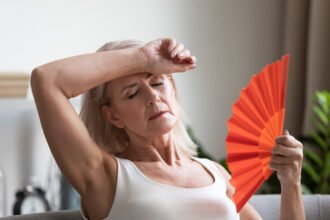Slips and falls can happen in the blink of an eye, often in spaces we believe to be safe. A brief moment of misstep can leave lasting consequences, affecting mobility, confidence, and overall health. What begins as a small incident can escalate quickly if injuries are not properly addressed, impacting both daily routines and long-term well-being. Awareness of potential hazards in familiar environments is crucial, yet many people underestimate the risks in their own homes or workplaces.
The aftermath of a fall often extends beyond physical injuries. Emotional strain, anxiety about returning to normal activities, and financial burdens from medical treatment can combine to complicate recovery. Even minor falls require attention to detail in care and rehabilitation to prevent recurring incidents. Understanding how these elements interact can help individuals and families respond more effectively to unexpected injuries.
Every household has hidden risks that may not be obvious until an accident occurs. Rugs, furniture, and even electrical cords can become dangerous when combined with a momentary lapse in attention. Preparing for these possibilities includes organizing spaces thoughtfully and anticipating potential hazards. By making safety a routine part of daily life, families can prevent incidents before they occur while promoting a sense of security for everyone in the home.
When Slip and Fall Injuries Disrupt Health
According to accidentjusticepro, slip and fall accidents are a leading cause of injuries across all age groups. While some incidents result in minor bruises, others can lead to fractures, head injuries, or long-term complications that significantly affect quality of life. In homes, wet floors, loose rugs, or poorly maintained stairs often contribute to these accidents. Workplaces face similar risks with slick surfaces, cluttered walkways, or inadequate safety equipment.
Prompt medical evaluation after a fall is critical to avoid worsening injuries. Treatment may range from physical therapy to surgical intervention, depending on severity. Early attention not only accelerates recovery but also reduces the likelihood of chronic pain or mobility issues. Families and caregivers play an essential role in monitoring recovery, making adjustments in daily routines, and creating safer living environments.
The long-term effects of a serious fall can change daily habits permanently. Individuals may experience reduced confidence in walking or climbing stairs and may require ongoing physical therapy or mobility aids. Social interactions can be affected if fear of falling limits outings or recreational activities. Recognizing these challenges early and addressing them proactively allows for better management of both physical and emotional recovery, ensuring that individuals regain independence safely.
How Safety Practices Protect Families
Taking steps to reduce the risk of falls is a practical approach to preventing accidents. Simple adjustments, like securing loose rugs, installing handrails, and improving lighting in key areas, can make a significant difference. Families often overlook minor hazards that may appear harmless until an accident occurs.
Regular maintenance and safety checks in the home contribute to long-term security. Encouraging healthy habits such as wearing supportive footwear, keeping walkways clear, and maintaining strength and balance can reduce the likelihood of accidents. Awareness and consistency in implementing these practices empower individuals to maintain a safer environment while fostering confidence in mobility.
Beyond immediate adjustments, families can create routines that reinforce safety habits. Children can be taught to pick up toys and avoid running indoors, while older adults can adopt exercises to improve balance and coordination. Community support programs may offer resources for fall prevention, extending protection beyond the household. A proactive approach builds resilience and ensures that safety is an integral part of everyday living rather than an afterthought.
Supporting Recovery After an Accident
Recovering from a fall involves both medical care and emotional support. Physical therapy can rebuild strength, flexibility, and coordination, while counseling or family encouragement can address the psychological effects of injury. Patients who engage in structured recovery routines often regain independence faster and reduce the risk of secondary accidents.
In addition to professional care, home modifications may be necessary during recovery. Temporary adjustments like installing grab bars or rearranging furniture can provide stability and prevent further falls. Each recovery journey is unique, and tailoring interventions to individual needs enhances outcomes and overall safety.
Active participation in recovery helps individuals reclaim control over their lives. Setting realistic goals and tracking progress can improve motivation and reduce frustration. Support networks, including friends, family, and healthcare professionals, reinforce recovery strategies and help identify potential obstacles before they become setbacks. This holistic approach strengthens physical, emotional, and social resilience after a fall.
The Role of Healthcare Professionals in Prevention
Healthcare professionals play a vital role in both preventing and treating fall-related injuries. They assess individual risk factors, provide guidance on exercises that improve balance, and recommend environmental changes to reduce hazards. Education from healthcare providers helps patients and families make informed decisions that enhance safety.
Medical oversight also ensures that injuries are not overlooked, which is especially important for older adults or those with underlying health conditions. Early intervention can prevent minor accidents from evolving into serious medical issues. Ongoing communication between patients, caregivers, and healthcare teams strengthens support networks and fosters safer living conditions.
In addition to direct patient care, healthcare professionals contribute to community education programs, offering workshops and resources on fall prevention. They may collaborate with local organizations to identify at-risk populations and implement targeted interventions. This proactive engagement broadens the impact of fall prevention strategies, helping to reduce injury rates across larger communities while promoting awareness and safety practices that extend beyond the clinical setting.
Maintaining Long-Term Safety and Confidence
Fostering a culture of awareness and prevention creates lasting benefits. Families and individuals can integrate simple habits that continuously reduce risk, like regular home inspections and mindful attention to potentially slippery surfaces. Encouraging active lifestyles supports strength and balance, making individuals more resilient to falls.
Confidence in daily movement is closely tied to safety measures and preparedness. When environments are thoughtfully maintained and precautions are taken seriously, individuals can focus on quality of life rather than fear of injury. Establishing these routines empowers people to live independently while minimizing the likelihood of falls, ensuring both peace of mind and physical well-being.
Long-term safety also involves continuous adaptation. As homes age or as individuals experience changes in mobility, reassessing risk and updating safety measures is essential. Families who remain vigilant and responsive to evolving needs help ensure that safety remains a priority. By creating an environment where everyone feels secure and supported, the likelihood of accidents decreases while overall well-being is strengthened.










